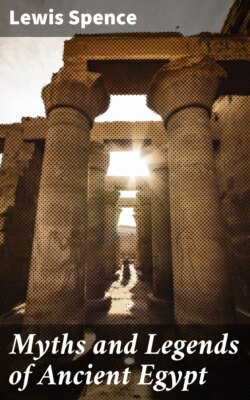Читать книгу Myths and Legends of Ancient Egypt - Lewis Spence - Страница 13
На сайте Литреса книга снята с продажи.
Early Burials
ОглавлениеEgyptian religious tenets carefully fostered the idea of the preservation of the human body after death. In the earliest period the burials of the time throw much light on the nature of religious belief. The corpse was buried in such a posture that it would appear to have been doubled up prior to interment. The knees touch the chin, and the hands are disposed in front of the face. The head was turned to the west. In later prehistoric times the body was often closely bound with wrappings which were so tightly drawn as to force all the bones parallel with each other. Later still, a less contracted attitude was adopted, which in turn gave way to a fully extended position. In the late prehistoric period the corpse is found wrapped in linen cloths. It was surrounded with articles provided for its use, nourishment, or defence in the other-world, or perhaps for that of its ka, or double—stone vessels containing beer, unguents of various kinds, flint knives and spear-heads, necklaces and other objects of daily use which the deceased had employed during life. Amulets were placed upon the corpse to protect it against evil spirits both in this world and in the life beyond.
In the Old Kingdom, which may be designated the Pyramid Age, we find a new description of burial coming into fashion. Mummification of a simple kind became the vogue. There is good reason to suppose that this custom arose out of the cult of Osiris, the god of the dead, and it powerfully influenced all future Egyptian funerary and theological practice and thought. But between what may be conveniently described as the 'prehistoric' period and that of the Pyramids several other types of tomb had found popularity. The Pharaoh, during the First Dynasty, was buried in a large rectangular building of brick, which had several chambers inaccessible from outside. In one of these the body of the king was laid, and in the others a variety of offerings and utensils were stored. The whole was merely an elaboration of the prehistoric method of sepulture. The exterior of the tomb was broken up by niches in the form of doors, through which it was thought the ka of the dead king would be able to leave and re-enter his tomb at will. Round the whole a wall was built, and fresh offerings to the deceased royalty were placed within the niches or alcoves of the tomb from time to time, and over all a mound of earth or brick was probably heaped. The name-stele of the monarch was blazoned in hieroglyphs on a large memorial slab outside, without any allusion to his life, character, or actions. Several of the early royal burial-places contain the graves of women, servants, and dogs. These in true Neolithic fashion had been slaughtered at the grave of the Pharaoh in order that they might accompany him and attend to his comfort and requirements in the new life. Later these sacrifices were discontinued, and instead of a graveside holocaust the images or pictures of wives and dependents were placed in the royal tomb.
